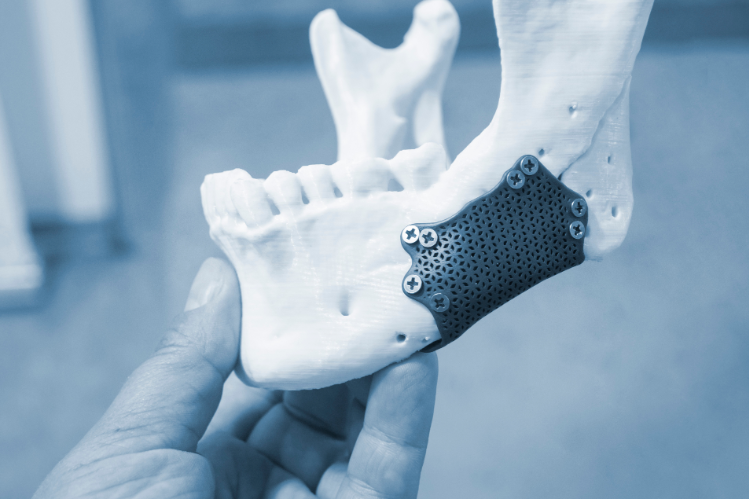
Have you ever noticed someone’s side profile where their chin seems to sit unusually far back? Or have you ever gone up to a mirror only to see that the way your jaw looks seems to be such a "setback"? Your observation is probably indicative of the recessed lower jaw, otherwise termed mandibular retrusion.
More than aesthetics, this condition might impede the person's ability to bite, chew, or speak clearly. Prolonged inaction can risk damage to your teeth, jawbones, and even your self-esteem. However, if caught early and treated right, most of the above can either be remedied or prevented.
So, what exactly is this recessed jaw, how does it manifest, and what can you do about it?
What is a Recessed Lower Jaw?
A recessed jaw happens when your lower jaw sits farther back than it should, compared to your upper jaw and the rest of your face. This is a type of bite issue called a Class II Malocclusion, where your top teeth and jaw protrude more than your bottom teeth.
It can be mild or more noticeable, and it might affect how you chew, breathe, or even how your face looks from the side.
Common Causes of a Recessed Lower Jaw
There’s usually more than one reason. It can be:
- Genetics: If your parents have small jaws, you might too.
- Childhood habits: Habits like thumb sucking or prolonged pacifier use can interfere with proper jaw development and lead to misalignment over time.
- Mouth breathing – Often caused by allergies or nasal blockages, it can change tongue position and jaw development.
- Sleep apnea or airway issues: In some cases, underdeveloped jaws are linked to breathing problems during sleep, especially in children.
Understanding the causes of a recessed lower jaw can help in preventing or addressing the issue early, especially in growing children.
Symptoms of an Underdeveloped Lower Jaw
Common underdeveloped lower jaw symptoms include:
- A visibly weak or receding chin
- Poor side-profile balance (concave appearance)
- Difficulty biting or chewing properly
- Frequent jaw or TMJ pain
- Speech difficulties or lisping
- Snoring or signs of sleep apnea
- Mouth breathing and dry mouth
- Overbite (upper teeth protrude significantly)
The earlier these signs are spotted, the more effective the orthodontic treatment for a recessed jaw can be.
How Does a Recessed Jaw Affect Facial Aesthetics?
One of the most noticeable effects of a recessed lower jaw is on jaw position and facial aesthetics. Our jaws significantly shape our facial appearance, especially the lower third, which influences the jawline, chin, and overall facial harmony.
When the lower jaw is set too far back, it can cause:
- A double chin, even if you’re slim
- Less jawline definition
- Uneven smile or bite
- Cheeks that look hollow
- An imbalance between your forehead, nose, and chin
This can make people feel insecure, especially teens and young adults.
Orthodontic Treatment for Recessed Jaw: What Are Your Options?
Thankfully, there are a variety of treatment options available for people with lower jaw misalignment, ranging from mild to more complex solutions.
- Functional Appliances (for kids/teens): These devices help the jaw grow properly if used early.
- Braces or Aligners: These help teens and adults improve how their bite fits, even if they can’t make the jaw grow.
- Jaw Surgery: For adults with more serious issues, surgery can reposition the jaw.
- Myofunctional Therapy: Special exercises to help fix tongue posture or breathing patterns, often combined with other treatments.
Real Talk: Living with a Recessed Jaw
Let’s be real, it can affect your daily life. People might treat you differently, and you might not feel great about your smile or profile. But understanding the condition and knowing that there are real, proven treatments can be a huge relief.
Watching someone complete treatment and emerge more confident and genuinely happier is truly one of the most rewarding experiences.
When Should You See a Specialist?
If you or your child shows signs of jaw misalignment, it’s never too soon—or too late- to talk to an orthodontist. They can tell you what’s going on and what your options are.
Even if you don’t need treatment right away, you’ll be better prepared for the future.
Final Takeaways: Don’t Just Cope, Correct It
A recessed lower jaw is more than just a cosmetic issue. It affects how you eat, breathe, talk, and how you feel. The good news is, there are ways to fix it. From minor adjustments to more advanced procedures, today’s treatments are built to help you live with greater comfort and confidence.
FAQs
1. Is a recessed jaw common?
Yes, it’s a relatively common condition, especially in children and teens, and often linked to genetics or early habits like thumb sucking.
2. Can orthodontics help a recessed jaw?
Yes, orthodontic treatments like braces, clear aligners, or functional appliances can help improve jaw alignment. In severe cases, jaw surgery may be recommended.
3. What is the difference between a recessed and a non-recessed jaw?
A recessed jaw sits further back than normal, causing misalignment and facial imbalance, while a non-recessed jaw aligns properly with the upper jaw and facial structure.
4. What is an underdeveloped jaw in adults?
It refers to a lower jaw that didn’t grow fully during the development stage. This can lead to bite issues, aesthetic concerns, and sometimes breathing or speech problems.
Citations:
McNamara, J. A. (1981). Components of Class II malocclusion in children 8–10 years of age. The Angle Orthodontist, 51(3), 177–202. https://doi.org/10.1043/0003-3219(1981)051<0177:COCIIM>2.0.CO;2
Singh, G., & Maher, C. (2002). Mandibular growth in response to functional appliances: A meta-analysis. American Journal of Orthodontics and Dentofacial Orthopedics, 121(3), 251–257. https://doi.org/10.1067/mod.2002.121444
Battagel, J. M. (1996). Obstructive sleep apnoea: A review of the dental literature. British Dental Journal, 180(5), 193–200. https://doi.org/10.1038/sj.bdj.4809049


